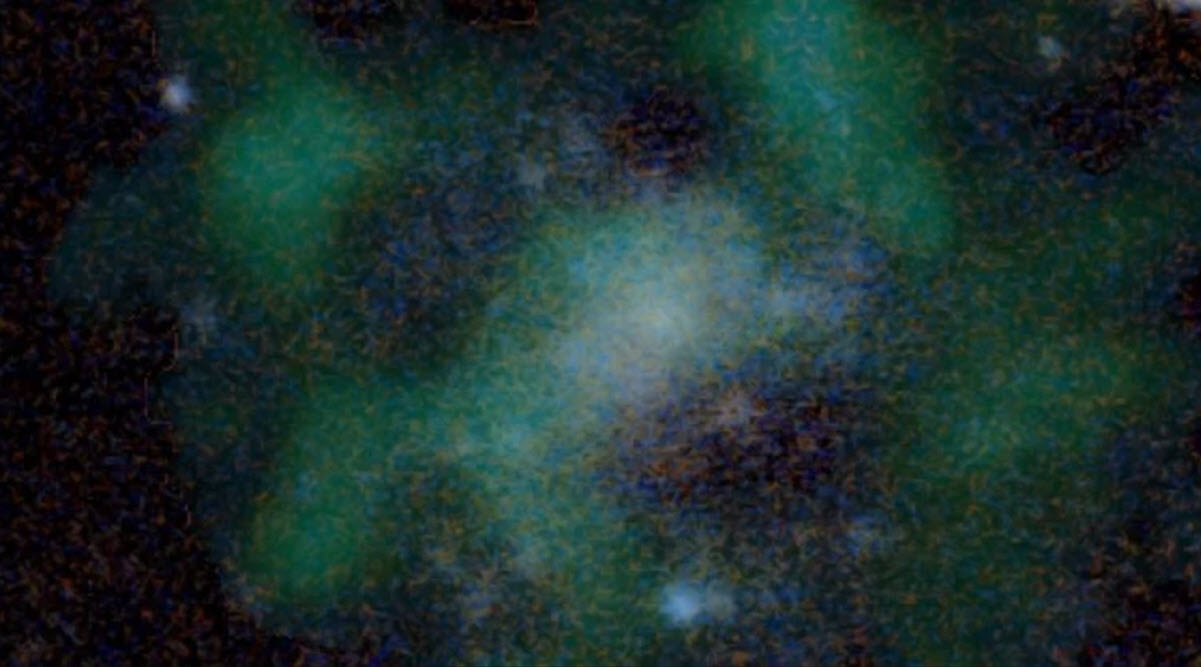Researchers from the Netherlands, the United Kingdom, and the United States have found no trace of dark matter in AGC 114905, a gas-rich and extremely diffuse galaxy about 248 million light-years from Earth, despite more intense and deeper observations. Analytics.
The result that is in Monthly Notices of the Royal Astronomical Society Posted on dem before printing arXiv server provides the paradoxical conclusion that galaxies can apparently exist without dark matter, although the assumption of the existence of dark matter is essential to our models of galactic evolution.
Astronomer Pavel Mancera Peña of the University of Groningen in the Netherlands is confused. Now he and his multinational team are faced with the problem “that theory predicts that there should be dark matter in AGC 114905, but our observations say it doesn’t.” In fact, the difference between theory and observation is getting bigger and bigger, so the researcher.
The starting point for the confusing observation goes back to 2019, when Mancera Peña and colleagues discovered six galaxies that appear to contain no dark matter. They decided to take a closer look at the galaxies. They were able to rule out evaluation errors early because all six galaxies from the first studies showed similar behaviour.
They’re now starting with AGC 114905, a galaxy the size of our Milky Way, but with a thousand times fewer stars and therefore much lower brightness. They hypothesized that the galaxy should contain the more dark matter, the less “normal matter” in it. These galaxies are linked to each other by dark matter, so the thesis that turns out to be wrong.
With the help of “The Karl G. Matrix. In doing so, they enclose the galaxy with a high spatial resolution in order to determine the galactic rotation curve, i.e. the orbital velocity of objects in AGC 114905 around the center of their galaxy.”
It is one of the most common ways to calculate the amount of dark matter in a galaxy. The presence of dark matter is used to explain particularly short circulation times. In other words, simplified: the more dark matter, the shorter the cycle times.
As it turns out, the spin curve of AGC 114905 can also be explained without assuming the presence of dark matter. This means that the amount of dark matter in the galaxy, if not zero, appears at least very insignificant. might happen. There are explanations for this.
For example, a nearby massive galaxy AGC 114905 could be pulling up its dark matter. “But there’s nothing,” says Mancera Peña. It also so happened that the researchers simply assumed the wrong distances of the observed galaxy when measured. But the researchers said the removal of AGC 114905 was well contained. Another possibility is that the estimated viewing angles are incorrect. Even then, the machines would have missed dark matter. The researchers consider this possible, but highly unlikely, because the deviations must be very large, they say.
The lack of a cosmic correlation factor, dark matter, in AGC 114905 remains a mystery at first. The researchers now want to intensively monitor the six identified galaxies one by one in the same way to see if a pattern can be identified that could provide clues to an explanation. But at first, confusion reigns.
You may also be interested in it

“Problem solver. Proud twitter specialist. Travel aficionado. Introvert. Coffee trailblazer. Professional zombie ninja. Extreme gamer.”




More Stories
With a surprise in the case: a strange cell phone from Nokia was introduced
PlayStation Stars: what it is, how it works and what it offers to its users | Sony | video games | tdex | revtli | the answers
t3n – Digital Pioneers | digital business magazine